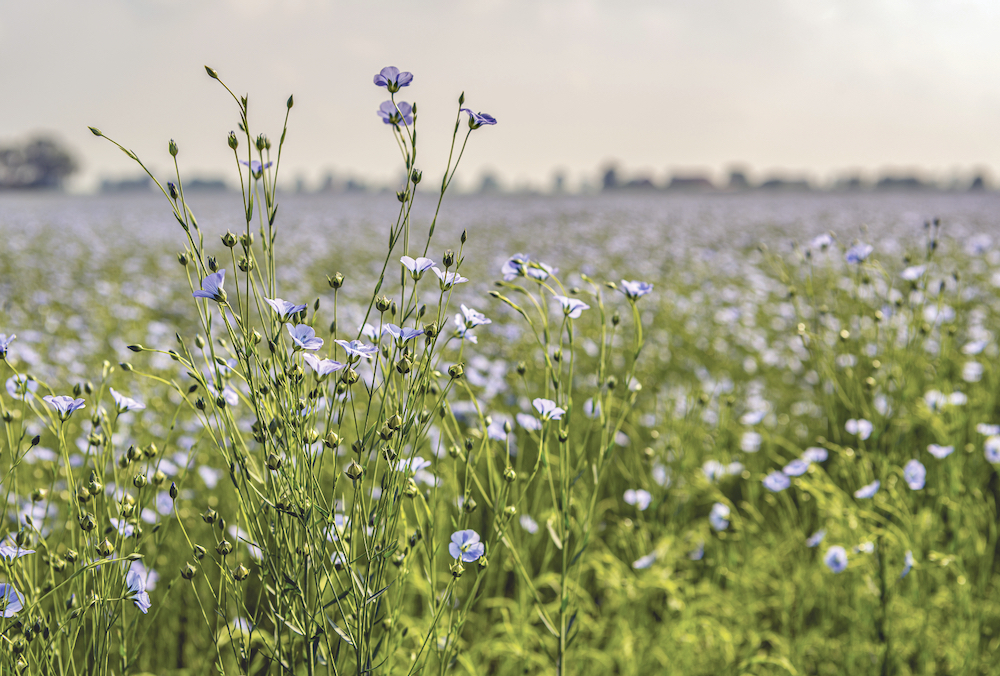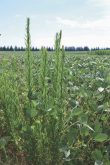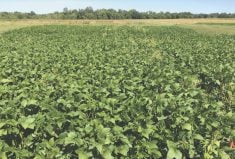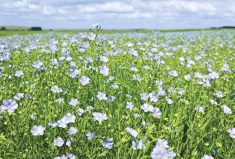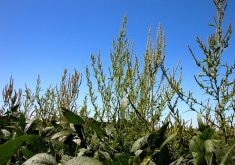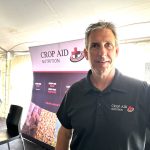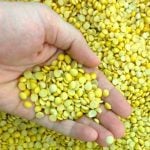Harvestability and residue management problems discourage some producers from growing flax, but one solution may be a pre-harvest herbicide or desiccant.
Flax stalks are fibrous and tough to cut or chop, says Chris Holzapfel, research manager at the Indian Head Agricultural Research Foundation (IHARF).
“Sometimes the stalks can stay green for a long time, which aggravates your problem even more. Whether it’s environmental or varietal you can get cases where your grain is more or less dry and ready to go but you still have these green stems.” Then it becomes virtually impossible to chop and spread.
Read Also
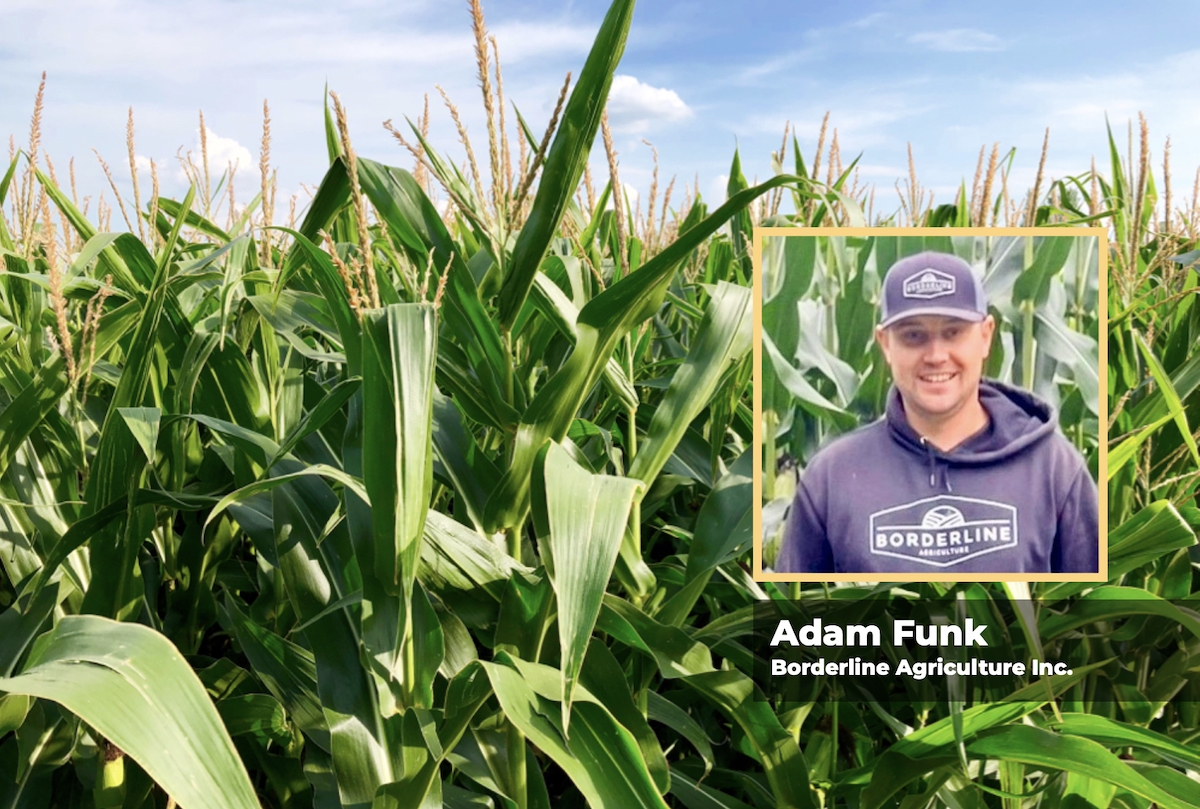
Agronomists share tips for evaluating new crop products and tech: Pt. 3
With new products, new production practices and new technology converging on the agriculture industry at a frenetic pace in recent…
Holzapfel is the lead on a project that evaluated several pre-harvest weed control and desiccant options for flax at three sites in Indian Head, Swift Current and Yorkton, Sask., in 2020.
Four treatments — (a) glyphosate applied alone, (b) glyphosate tank mixed with saflufenacil, (c) diquat and (d) an untreated control — were tested on the varieties CDC Bethune and CDC Glas for a total of eight treatments.
The study was funded by the Ag Demonstration of Practices and Technologies (ADOPT) program through the Saskatchewan Flax Development Commission and ran in collaboration with Bryan Nybo (Swift Current) and Mike Hall (Yorkton).
The study found, broadly, that there were “measurable benefits” to using a pre-harvest treatment to speed up crop dry-down, with some variations between products and environments.
Under warm, dry conditions, crops did fine on their own and did not require spraying, Holzapfel says.
“In most cases, unless you need weed control, if the late summer/early fall is particularly dry you don’t probably need the product. It’s always better if you can do your fall spraying after you’ve had a rain to wash off the dust and get better uptake. If it’s a relatively dry fall, I think not spraying at all is an excellent option. It’s going to be the cheapest, and as an industry we don’t want to use products like this unnecessarily.”
But he says if farmers are “up against the calendar,” a dry-down product can be a way to get ahead, although co-operation from Mother Nature is always necessary as products like diquat will be less effective if it’s cold and wet after spraying.
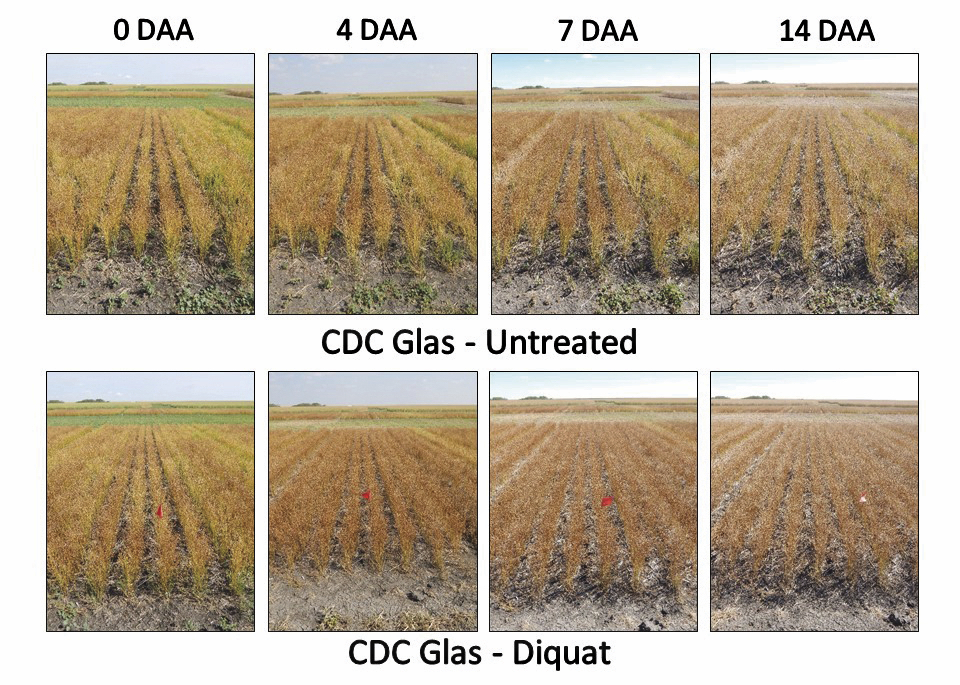
Dry-down or weed control?
Farmers should first consider their priorities before choosing a product, Holzapfel says. “Which comes first, dry-down or weed control? How quickly do you need it to work? How soon do you need to combine?”
The research team used visual ratings to assess stem dry-down at predetermined intervals (zero days after application, four DAA at Indian Head only, seven DAA and 14 DAA at all sites). The actual stem and seed moisture were assessed on a wet basis.
When it came to seed moisture, all products were an improvement over the control at Indian Head, Holzapfel says. “We had similar final seed moisture content between glyphosate and saflufenacil plus glyphosate, but with diquat that was significantly lower. At Yorkton, all of the products resulted in drier seed than the control but there was no difference between products.”
For stem moisture, the team saw the cleanest results at Indian Head, where the control was the wettest. Glyphosate offered an improvement, glyphosate plus saflufenacil improved things still more, and diquat “was in a league of its own.”
Holzapfel says the products performed pretty consistently regardless of variety.
The study found that of the four options, glyphosate applied alone was least effective in drying the crop down, but still worked quite well and provided excellent weed control at a low cost.
At Indian Head, tank mixing glyphosate with saflufenacil sped stem colour change and led to lower stem moisture at harvest than glyphosate applied alone. This was the most expensive of the treatments.
Diquat was by far the most effective crop desiccant in terms of speed of drying and total level of seed and stem dry-down. Holzapfel says the downside with diquat is that it offers little weed control, particularly for perennial weeds, and regrowth can occur given the right conditions. This option was more expensive than glyphosate but less pricey than the glyphosate-saflufenacil tank mix.
Holzapfel says all of the options can be effective for producers hoping for earlier threshing and harvest as well as an improved ability to chop straw.
If harvest is expected in less than 10 to 14 days and there are few weeds, diquat allows for earliest harvest and most thorough dry-down, Holzapfel concluded in his report on the study. If weeds are a concern, the crop is close to the 75 per cent boll colour change and harvest can wait 10 to 14 days or more, glyphosate or glyphosate tank mixed with saflufenacil could be appropriate options.
Growers looking for rapid and thorough dry-down as well as perennial weed control could consider applying glyphosate at 75 per cent boll colour change and following up with diquat, he adds.
It should be noted that saflufenacil (trade name Heat WG and Heat LQ) does not have a maximum residue limit (MRL) for China, and use of the product on flax headed for the EU will result in the MRL being exceeded, so producers should check with buyers before use.
Holzapfel plans to run the study again in 2021, this time without saflufenacil as the product is not fully approved for use in flax as a pre-harvest application. In its next phase, the study will test glyphosate and diquat.


